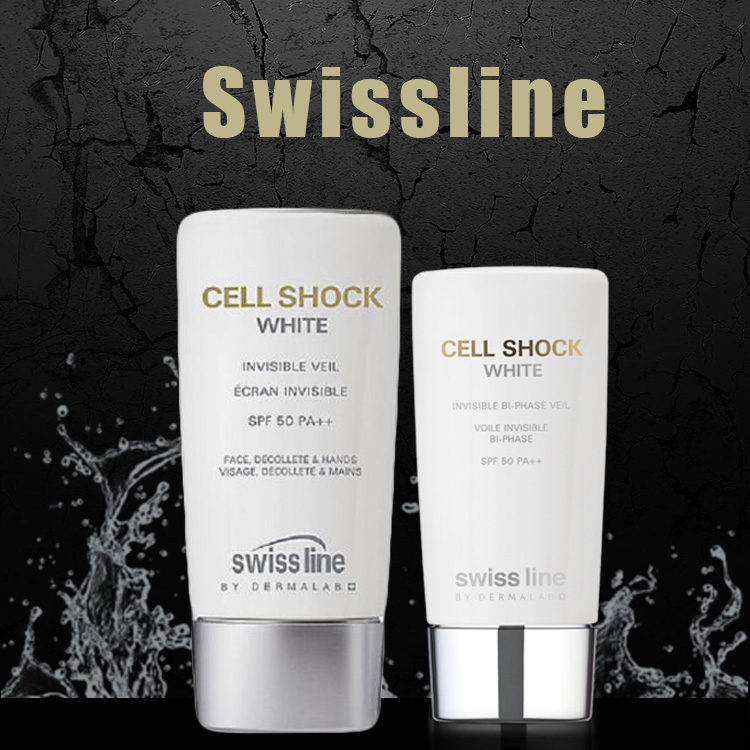spotless
Pigmentation spots – uneven patches of brown on the face, hands, neck and shoulders – can start to appear from the age of 30. UV rays and aging are the main culprits, but hormone imbalances, trauma to the skin and certain drugs can also play a role. Whatever the instigator, the spots arise from an overproduction of melanin (the pigment that is responsible for the skin’s colouring), and an uneven distribution of it.
But, the good news is, the spots can be faded so your skin tone appears more even.
Home remedies, skincare products and non-invasive cosmetic procedures are all viable options when it comes to tackling hyperpigmentation… you just have to decide what is right for you.
HOME REMEDIES
Although kitchen cabinet cures might not be for everyone, some people find it very helpful when it comes to lightening pigmentation spots on their skin.
LEMON JUICE
Lemons contain citric acid, an alpha hydroxy acid known to remove dead skin cells while promoting new cell growth. They also contain vitamin C, an antioxidant that when applied to the skin reduces the amount of melanin produced. Squeeze lemon juice into a cotton ball and rub it on the skin. Leave for 10-15 minutes and then wash it off. Apply twice daily until you notice for a few months.
ALOE VERA
Aloe Vera works well on hyperpigmented skin due to the presence of mucilaginous polysaccharides in the gel. It can remove the dead skin cells and promote regeneration of new skin cells. Before going to bed, apply some fresh aloe vera gel on the hyperpigmented skin and leave it on overnight. Rinse it off in the morning. Follow this remedy daily for a few weeks.
VITAMIN E
Being an antioxidant, vitamin E (like vitamin C) neutralizes the effects of harmful UV rays of the sun and repairs and protects the skin, so it is an obvious treatment for skin hyperpigmentation. Puncture two or three vitamin E capsule and put the contents in a bowl. Add three or four drops of castor oil to it and mix well. Apply the mixture on the affected skin before going to bed. Rinse it off the next morning. Follow this remedy daily for two to three weeks.
SKINCARE PRODUCTS
If you would prefer to rely on scientifically formulated skincare products, opt for topical treatments that remove the dead and damaged cells from the surface of the skin enabling the emergence of the new skin cells, and follow-on with products that slow down melanin production and remove existing melanin from the skin.
REMOVE DEAD AND DAMAGED CELLS
Topical treatments containing alpha-hydroxy acids (AHAs) or Retin-A (retinol is the over-the-counter version) are great because they trigger rapid cell turnover, improving the skin texture and fading pigmentation spots. AHAs break apart the uppermost layer of skin, facilitating the removal of dead and damaged surface cells and encouraging the growth of the newer, healthier skin.
Swiss line’s Cell Shock White Facial Brightening Essence contains a potent AHA botanical blend that increases cell renewal, safely exfoliating dead cells for a fresher, brighter, more even-toned skin.
SLOW DOWN MELANIN PRODUCTION
There are a number of ingredients known to slow down melanin production, but some of them aren’t as safe as others. Arbutin, however, is not only safe, but one of the most effective ingredients in inhibiting the function and activity of tyrosinase, an oxidizing enzyme that is responsible for the production of melanin in the body. A natural skin lightening agent, it acts quickly to fade/lighten age spots and hyper-pigmentation while inhibiting melanin production.
Swiss line has three products within its Cell Shock White collection that contain arbutin: Brightening Diamond Serum, Daytime Brightening-Power Emulsion and Overnight Brightening-Power Cream. To prevent future pigmentation, use on a daily basis an adapted UV protector, such as Invisible Bi-Phase Veil SPF 50 PA++, which is light enough to mix with other moisturizers, or Brightening Bi-Phase Veil SPF 35 PA++ to shield the skin from future UV-induced damage.
NON- INVASIVE COSMETIC PROCEDURES
If topical treatments aren’t giving you your desired results, you might want to consider laser resurfacing treatments, intense pulse light therapy, freezing (cryotherapy), abrasions or chemical peels. Just be sure to select a highly qualified practitioner.
LASER AND INTENSE PULSED LIGHT THERAPIES
These procedures destroy melanin-producing cells (melanocytes) without damaging the skin’s surface. Treatments with a laser or intense pulsed light typically require two to three sessions.
FREEZING (CRYOTHERAPY)
This procedure involves using a cotton-tipped swab to apply liquid nitrogen or another freezing agent to the spots to destroy the extra pigment. As the area heals, the skin appears lighter. Freezing is typically used on a single age spot or a small grouping of age spots.
DERMABRASION AND MICRODERMABRASION
Abrasions sand-down (plane) the surface layer of your skin with a rapidly rotating brush. This procedure removes the skin surface, and a new layer of skin grows in its place. Microdermabrasion is a less aggressive approach that leaves mild skin blemishes with a smoother appearance.
CHEMICAL PEELS
In this treatment, a chemical solution is applied to the pigmentation spots. As the skin peels, it is replaced with a new, brighter, smoother skin with less lines and wrinkles. Whether you go the kitchen cabinet, scientific lab or doctor-office route, you must remove the dead skin cells, inhibit melanin synthesis and prevent future pigmentation if you want to get rid of those darn spots.
Here’s to a spotless future!



